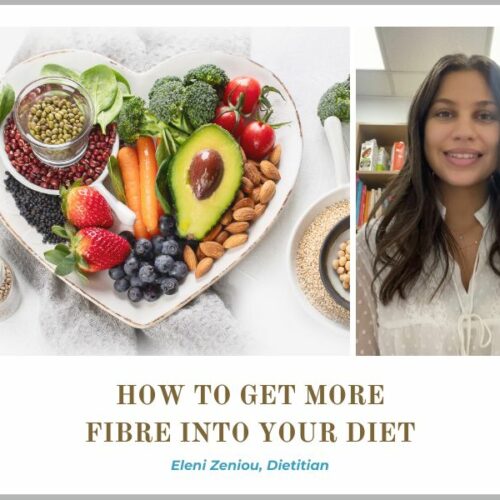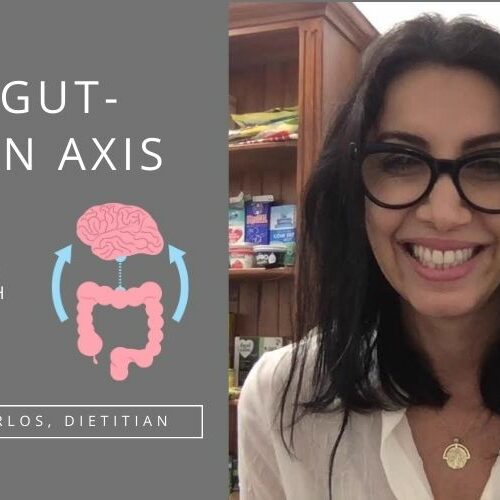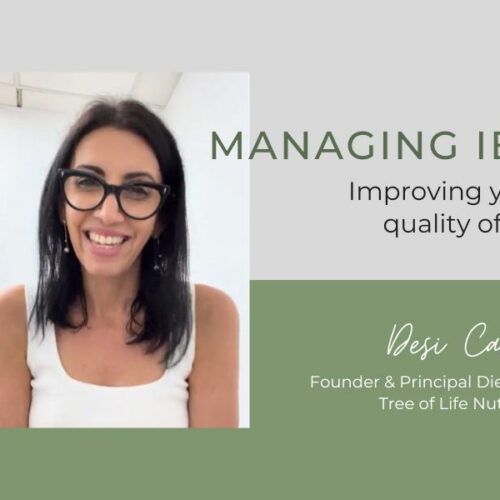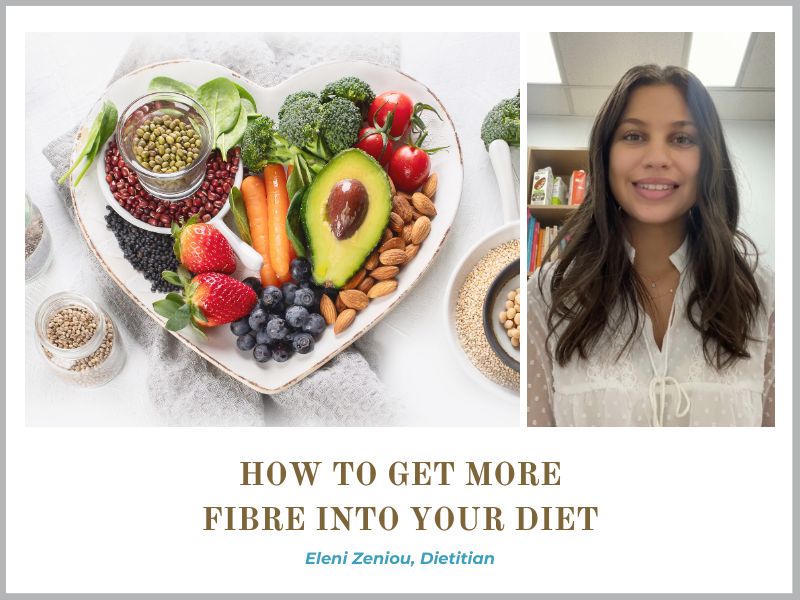
Most of you will know here at Tree of Life Nutrition, we have a huge focus on gut health, and it’s one of the first things that we will look at when talking to people about a variety of different conditions. One of the key players involved in having a healthy gut microbiome and a healthy gut is making sure that you’re having enough fibre. Usually, one of the first things that we will check when looking at your diet is, are you having enough fibre throughout the day?
Adequate fibre intake helps keep our bowels functioning well, and supports the diversity of the gut microbiome. So thinking about increasing the amount of fibre you’re having per day is super important. Every person should be having between 25 to 30 grams of fibre per day. Generally, this amounts to at least:
- 5 serves of vegetables per day.
- 4 serves of wholegrains per day.
- 2 serves of fruit.
Most people will find they’re not meeting that, and so it’s definitely important to start thinking about ways that you can easily increase the amount of fibre in your diet.
Hit play on my video, or keep reading below, where I share 5 easy ways you can increase the fibre in your diet, without having to change things around too much.
1. Start your day off right.
Having a breakfast that is high in fibre is a good way to start the day. One, you’re going to get your bowels moving in the morning, and two, it’s going to help you feel fuller for longer.
Breakfast is actually one of the best times to get your fibre in, because a lot of breakfast foods are quite naturally high in grains, and therefore, fibre. So looking at things like a beautiful grainy muesli, having some seeded sourdough or multigrain toast. You can also add flax seeds or psyllium husk to your muesli, yoghurt or other cereals in the morning.
Obviously there are great high fibre cereals on the market as well, or even if you’re preparing it overnight, oats or a chia seed pudding. So there are plenty of practical ways that you can start the day that will have a lot of fibre in them.
The takeaway here is – think about what you normally have for breakfast and how you can change that to be higher in fibre. If you’re having toast in the morning, switching to a grainy bread or if you’re having a cereal, making sure that it has enough fibre in it or adding a fibre supplement to it like psyllium husk or flaxseed.
Rather than changing the way you eat completely, you can modify what you’re already doing to help bump up the amount of fibre you’re having in a day.
2. Include fibre-rich snacks throughout the day.
Choose snacks throughout the day which are high in fibre. This could be some veggie sticks, a beautiful grainy cracker, a high fibre muesli bar or whipping up some homemade muesli muffins with added fibre. Or even simply having a small handful of nuts or even better, mixing them with some seeds as well, which are going to bump up that fibre amount. Including fibre in your snacks is a good way to slowly get your fibre targets up to 30.
Another really easy and tasty way to have more fibre throughout the day is adding seeds or nuts to your salads for crunch and a little bit of fibre.
3. Check your labels.
For packet foods, check the label to understand just how much fibre your bread, pasta, muesli, cracker, or other grain contains. A good target to aim for is at least three grams of fibre per serve in the item. And while you’re already looking at the nutrition panel, you may as well have a little look at your sugar too. Check to see if it has less than 15 grams per a hundred grams of sugar. If it has greater than 15 grams, look at the ingredient list and see if the sugar is listed as one of the first few ingredients because that indicates that there is a lot added.
So check your labels, look at the muesli you’re already having and spend some time in the supermarket. There is a huge variety of grains, cereals, and muesli bars on the market. Shop around to find what the best option for you is going to be.
4. Five serves of vegetables.
Everyone tells you how important it is to have your vegetables, and we should all be having five serves a day. But we don’t often hear why, and how to achieve that serving. Not only are vegetables a potent source of vitamins and minerals, but they’re also an important way to get fibre into our diet. We generally say, aim for two cups per day of raw (uncooked) veg, and one and a half cups of cooked veg as part of your five servings. Try to make half of your plate vegetables, at least. Seems like a lot? Don’t be daunted! Here’s how that could look in your day in terms of fibre intake…
- You might have a salad with some protein at lunchtime, with perhaps some rice or some whole grain bread on the side, so you’re getting more fibre there. A light salad with two cups of spinach doesn’t actually feel like a whole pile of vegetables.
- At dinner, you can eat your one and a half cups of cooked vegetables with a serving of meat or fish.
- Five serves of vegetables also isn’t as daunting when you spread it across every meal. Let’s say you’ve included carrot sticks and hummus for a snack. That’s one of your serves of veg. So then you only need one cup of raw veg for lunch and then one and a half cups of cooked vegetables for dinner!
Eat the rainbow
Another really exciting thing with your vegetables is to get different diversity in, so getting in different colours and flavours. Not only does it make your plate more visually exciting, but you’re fueling your gut with different types of fibres, as well as different types of antioxidants which help to reduce inflammation in your body. So thinking about different colors. Instead of just getting the orange carrots, get the purple and the orange, instead of getting just a bag of spinach, get mixed leaves.
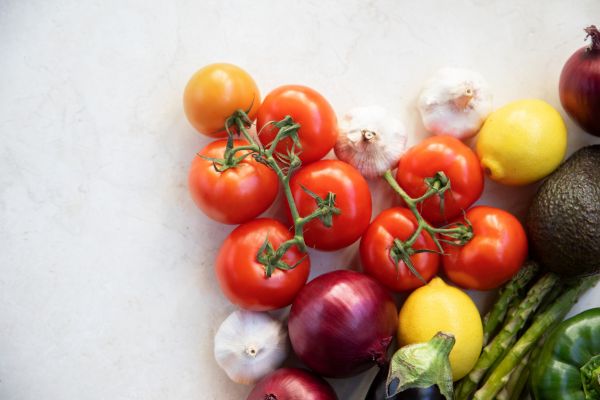
Keep the skin on!
And another thing you’ve probably heard is to keep the skin on your fruits and vegetables and that couldn’t be more true. A lot of people tell me very excitedly that they’ve bought a juicer and that’s fantastic, but the juicer removes all the fibre and all the goodness. So eating your veggies whole is actually a lot better for you than juicing the vegetables as well. Most of the fibre and nutrients are in that skin. So not peeling carrots or cucumbers, eating the skin on them, not peeling zucchini. So that’s where all that flavour is and also the nutrients.
Also don’t forget to get your two serves of fruit in per day as well. Great for your snacking items. Again, keep the skin on where possible and that’s the best way to have them.
5. See your dietitian to navigate fibre supplementation.
And my last tip is to make sure to speak to your dietitian about what types of fibre supplements might be useful for you. So if you’re someone that has had ongoing constipation or diarrhoea or both, or you’re just feeling like you want to improve your gut health, it can be useful to talk to a dietitian. We are great at tailoring the type of fibre that you might need to best support your gut microbiome. Testing can also be helpful to understand your microbiome completely, and offering the best solutions that work for you.
So definitely book an appointment and chat with one of us. We’re happy to advise on what supplements or what foods would be best suited to help you.
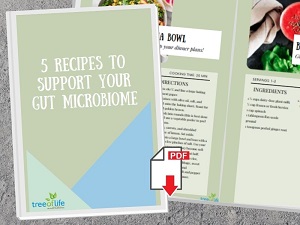
Try some high-fibre, gut-fuelling recipes.
Try out a day of healthy eating with our recipe eBook 5 Recipes to Support Your Gut Microbiome. These recipes are high in fibre and prebiotic, and low in sugar and saturated fat.
DISCLAIMER:
The content in this article is not intended as medical advice. It is also of a general nature and is not tailored to your individual circumstances. If you are experiencing significant digestive symptoms, a 1:1 consultation is always the best approach. Please contact our clinic to discuss your unique situation and our tailored and individualised IBS protocol.

